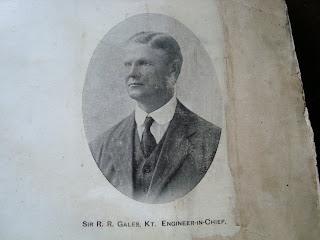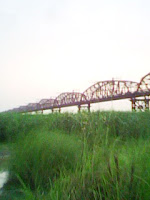
Paksey Lalon Shah Bridge
The proposed 1,786m long Paksey Road Bridge would be constructed just at 300m below of the existing Hardinge Railway bridge. The project also includes construction of two guide banks on the river Ganges. A mathematical modelling study of the river Ganges at the project location has been carried out by SWMC under a joint venture with DHI followed by a contract agreement signed with the Roads & Highways Department (RHD), Ministry of Communications, Bangladesh.
Paksey Bridge will provide a strategic road connection across Padma (Ganges) River in the western part of Bangladesh, about 300 m (1,000 feet) downstream of the existing Hardinge Railway Bridge in Pabna and Kushtia Districts. It will be 1786 m (5,894 feet) long and consist of fifteen spans typically 109.5 m (361 feet) long and two 72-m (238-foot) -long end spans.

The project is the responsibility of Bangladesh Roads and Highways Department (RHD) in coordination with the Ministry of Communications (MOC). It is funded by the Japan Bank for International Cooperation (formerly the Overseas Economic Cooperation Fund) under a soft loan to The Government of Bangladesh. PB is serving as prime consultant in association with Worley International LTD., New Zealand; Kuljian Corporation, U.S.; Sarm Associates LTD., Bangladesh; and KS Consultants LTD., Bangladesh.

The superstructure was designed as a continuous, precast prestressed single-cell box girder to be erected by the segmental balanced cantilever construction method (Figure 1). This bridge is the longest segmental concrete bridge known in the world to be designed as a continuous structure. It will carry two lanes in each direction on 7.5-m (25-foot) -wide roadways and two 1.0-m (3-foot) -wide walkways.
Paksey Harding Bridge





History of Harding Bridge
This proposal was passed in 1908.Engineer Sir Robert Gailes was selected for
supervision for the entire project.
In 1909 Survey started . Under 1910-1911 embankments were erected
on the both sides of the river for the protection of the proposed bridge.
1912: guide band construction started 24,400 workers worked for five
years length:5,800ft, number of Garters (spans): 15, each 360 ft long.
Opening: February, 04, 1915 by Lord Harding, Vice Roy of the British India
Opened for passenger traffic: February.25.1915,
The Harding Bridge was severely damaged during the WOL 1971, It
was on the 13th December 1971, when the Indian Air Force plane
bombed on the 4th garter from the Paksey side, As the Pakistani army
was on retreat towards Jessore, their last stronghold, the Harding's
bridge was strategically very important. The allied force damaged the
bridge the Japanese Government helped to reconstruct the bridge











